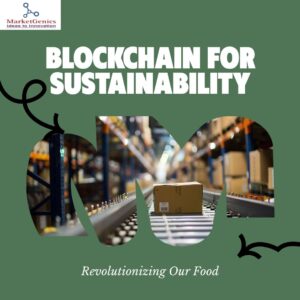In today’s fast-paced world, growing concerns over food safety, fraud, and sustainability have put our food under the spotlight. Enter Blockchain Technology – once known for powering cryptocurrencies, it’s now revolutionizing the food supply chain with its promise of transparency and trust.
Let’s explore how this game-changing technology is improving what ends up on our plates.
Imagine a digital ledger – secure, transparent, and immutable. That’s blockchain. It records data in a chain of blocks, each linked to the previous one, creating a permanent record of every transaction or movement.
In the context of food, blockchain tracks the journey of food items from farm to fork, ensuring that every stakeholder — from farmers and suppliers to processors, retailers, and consumers — knows exactly where the food comes from and how it was handled.

The global food system is vast and complex. With multiple intermediaries involved, tracing the origin of a single food item can take days or even weeks. This lack of visibility leads to problems like:
Here’s where blockchain steps in.
One of the biggest advantages of blockchain is real-time traceability. By scanning a QR code on packaging, a consumer can see:
This builds consumer confidence and allows quick action during recalls.
Contaminated food poses serious health risks, but blockchain can trace the source in seconds, not days. For instance, during a U.S. lettuce outbreak, supermarkets had to discard all stock. With blockchain, only the affected batch could’ve been removed, avoiding panic and waste.
Food fraud costs the global economy over $50 billion annually. Blockchain can verify claims like:
By recording every step of production on an immutable ledger, blockchain helps verify authenticity.
More consumers are demanding ethical sourcing and environmental responsibility. Blockchain makes it easier to:
This technology empowers brands to prove their sustainability claims and help consumers make informed, ethical choices.
1. Walmart & IBM Food Trust: Walmart partnered with IBM to use blockchain for tracking fresh produce and pork in China.
2. Starbucks (Bean to Cup): Starbucks uses blockchain to let customers trace the journey of their coffee beans from the farm to the cup, ensuring transparency in sourcing.
The integration of blockchain technology into the food supply chain is gaining momentum, driven by the need for enhanced transparency, safety, and efficiency. Here are some notable developments:
The global blockchain technology market was valued at USD 27.85 billion in 2024 and is projected to reach USD 746.41 billion by 2032, growing at a CAGR of 49.7% .
Walmart’s blockchain initiative reduced the time to trace the origin of mangoes from 7 days to 2.2 seconds, showcasing the technology’s potential in improving food traceability.
Like any emerging technology, blockchain isn’t without its hurdles:
Yet, as technology becomes more accessible, these challenges are being addressed rapidly.
Blockchain is not a silver bullet, but it’s a powerful step toward rebuilding trust in the food we consume. As consumers demand greater accountability and as governments push for transparency, blockchain is no longer a “nice-to-have” — it’s becoming the new standard. With blockchain, we’re entering a world where every bite tells a story. And that story is clearer, safer, and more honest than ever before. With MarketGenics research reports further giving clear picture of the evolution and statics, a company in Blockchain can grow exponentially.

© 2025 MarketGenics India Pvt Ltd.; All rights reserved